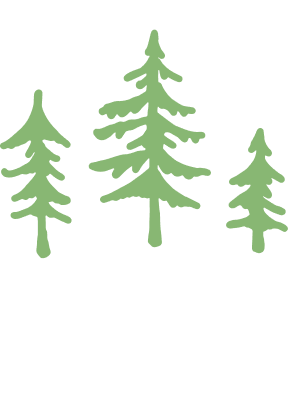Casablanca is the largest city in Morocco and a popular tourist destination. Located on the Atlantic coast, it boasts a rich history, vibrant culture, and stunning architecture. A 12-day tour of Morocco from Casablanca is an excellent way to explore the country’s many attractions and immerse yourself in its unique culture.
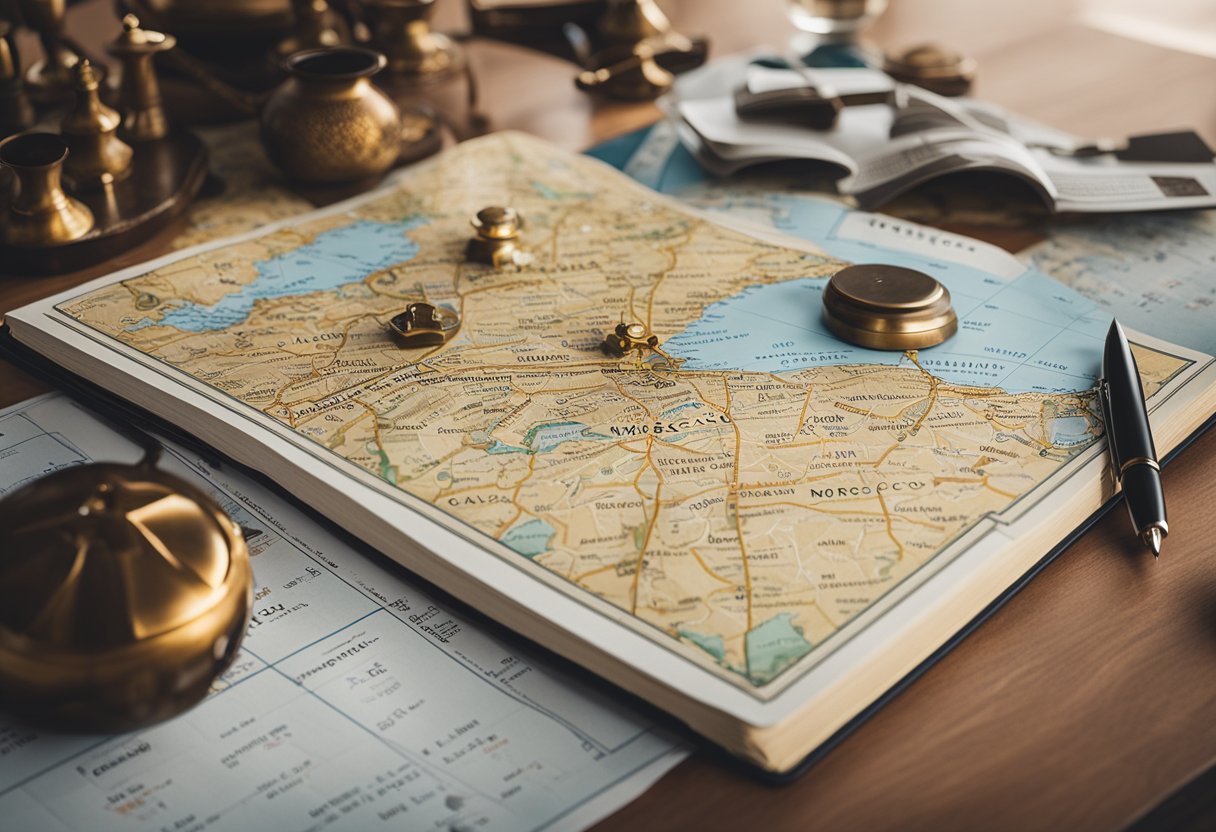
To plan a 12-day tour of Morocco from Casablanca, you need to consider several factors. These include the best time to visit, itinerary planning, accommodation options, transportation modes, cultural etiquette and tips, local cuisine and dining, safety and health considerations, budgeting your tour, packing essentials, communication and connectivity, and souvenirs and shopping. With careful planning and research, you can create a memorable and enjoyable tour that meets your needs and interests.
Key Takeaways
- Planning a 12-day tour of Morocco from Casablanca requires careful consideration of several factors, including the best time to visit, itinerary planning, accommodation options, transportation modes, cultural etiquette and tips, local cuisine and dining, safety and health considerations, budgeting your tour, packing essentials, communication and connectivity, and souvenirs and shopping.
- With careful planning and research, you can create a memorable and enjoyable tour that meets your needs and interests.
- Morocco is a beautiful country with a rich history, vibrant culture, and stunning architecture, and a 12-day tour from Casablanca is an excellent way to explore its many attractions and immerse yourself in its unique culture.
Overview of Casablanca

Casablanca is the largest city in Morocco and is located on the Atlantic coast. It is a bustling city with a rich history and culture. The city is known for its stunning architecture, delicious food, and vibrant nightlife. It is also a great starting point for exploring other parts of Morocco.
Attractions
Casablanca has several must-see attractions, including the Hassan II Mosque, which is one of the largest mosques in the world. It is a stunning piece of architecture that sits on the edge of the Atlantic Ocean. The mosque is open to visitors, and guided tours are available.
Another popular attraction in Casablanca is the Corniche, a beautiful seaside promenade that stretches along the coast. It is a great place to take a stroll, enjoy the ocean breeze, and watch the sunset.
Food
Moroccan cuisine is known for its bold flavors and unique spices, and Casablanca is no exception. The city is home to several excellent restaurants that serve up traditional Moroccan dishes, such as tagine, couscous, and harira soup. Seafood is also a popular choice, given the city’s location on the coast.
Nightlife
Casablanca has a vibrant nightlife scene, with plenty of bars, clubs, and lounges to choose from. The city’s bars range from cozy and intimate to large and lively, so there is something for everyone. The clubs are known for their energetic atmosphere and often feature live music or DJs.
Overall, Casablanca is a fantastic destination for anyone looking to experience Moroccan culture, food, and nightlife. It is a great starting point for exploring other parts of the country and is sure to leave a lasting impression on visitors.
Choosing the Right Time to Visit
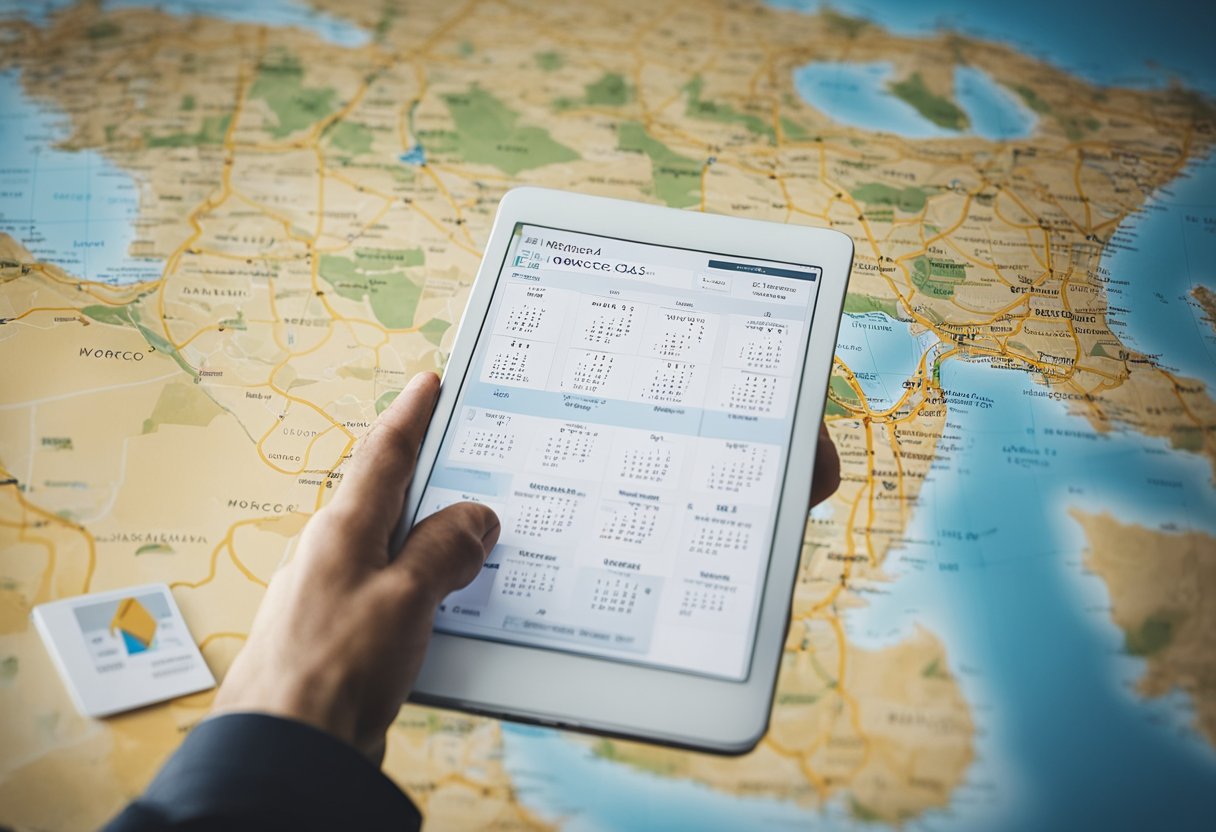
When planning a 12-day tour from Casablanca, choosing the right time to visit Morocco is crucial. The country has a Mediterranean climate, with hot summers and mild winters. However, the weather can vary depending on the region you plan to visit.
The peak tourist season in Morocco is from June to August, when the weather is hot and dry. This is an excellent time to visit the beaches and coastal cities, but it can be scorching in the Sahara desert. It’s important to note that prices for accommodations and tours may be higher during this time.
If you prefer milder weather and fewer crowds, consider visiting Morocco in the shoulder seasons of April to May or September to November. During these months, the weather is pleasant, and the landscapes are lush and green. This is also a great time to visit the desert, as the temperatures are more comfortable.
Winter in Morocco, from December to February, can be cold and rainy, especially in the northern regions. However, the weather is generally mild in Marrakech and other southern cities. If you plan to visit the mountains, this is an excellent time for skiing and snowboarding.
Overall, the best time to visit Morocco depends on your preferences and itinerary. Consider the activities you want to do and the regions you want to visit to determine the ideal time for your 12-day tour from Casablanca.
Itinerary Planning
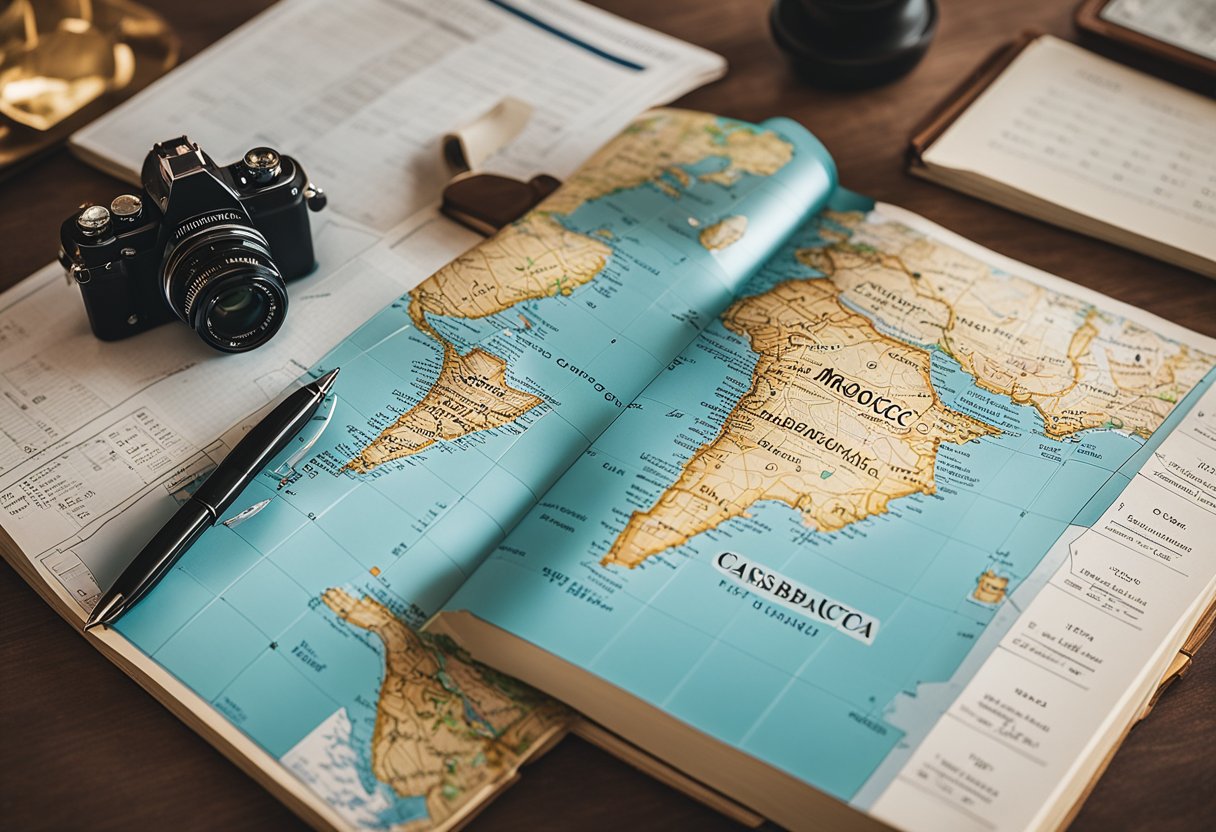
Planning a 12-day tour from Casablanca can be overwhelming, but with careful planning, it can be a memorable experience. The following itinerary is a suggested plan that covers the highlights of Morocco. It is important to note that this itinerary can be customized to fit individual preferences and interests.
Day 1: Arrival in Casablanca
Upon arrival in Casablanca, visitors can explore the city’s vibrant culture, starting with the Hassan II Mosque, one of the largest mosques in the world. Visitors can also take a stroll along the Corniche, a scenic promenade overlooking the Atlantic Ocean.
Day 2: Exploring Casablanca
Visitors can spend the second day exploring the city’s historic landmarks, including the Royal Palace of Casablanca and the Casablanca Cathedral. They can also visit the Museum of Moroccan Judaism, which houses a rich collection of Jewish artifacts.
Day 3: Rabat and Meknes
On the third day, visitors can take a day trip to Rabat, the capital of Morocco, and explore the city’s historic landmarks, including the Hassan Tower and the Royal Mausoleum of Mohammed V. They can also visit the nearby city of Meknes, which is known for its historic architecture and vibrant markets.
Day 4: Volubilis and Fes
Visitors can spend the fourth day exploring the ancient Roman ruins of Volubilis, which is a UNESCO World Heritage Site. Afterward, they can head to Fes, one of the most beautiful cities in Morocco, and explore its historic landmarks, including the Bou Inania Madrasa and the Al-Attarine Madrasa.
Day 5: Fes Sightseeing
On the fifth day, visitors can explore the city of Fes, which is known for its vibrant markets and historic landmarks. They can take a guided tour of the city’s medina, which is a UNESCO World Heritage Site, and explore the historic tanneries and souks.
Day 6: Journey to Merzouga
Visitors can spend the sixth day traveling to Merzouga, a small village located on the edge of the Sahara Desert. They can take a camel ride through the dunes and watch the sunset over the desert.
Day 7: Sahara Desert Experience
On the seventh day, visitors can spend the day exploring the Sahara Desert, including the Erg Chebbi dunes and the nearby village of Khamlia, which is known for its traditional Gnawa music.
Day 8: Dades Valley
Visitors can spend the eighth day exploring the Dades Valley, which is known for its stunning landscapes and historic kasbahs. They can also take a guided tour of the Todgha Gorge, which is a popular hiking destination.
Day 9: Ait Benhaddou and Ouarzazate
On the ninth day, visitors can explore the historic kasbah of Ait Benhaddou, which is a UNESCO World Heritage Site. They can also visit the nearby city of Ouarzazate, which is known for its historic landmarks and vibrant film industry.
Day 10: High Atlas Mountains
Visitors can spend the tenth day exploring the High Atlas Mountains, which offer stunning views and a unique cultural experience. They can also visit the nearby village of Imlil, which is a popular starting point for hiking and trekking.
Day 11: Marrakech
On the eleventh day, visitors can explore the vibrant city of Marrakech, which is known for its historic landmarks and vibrant markets. They can visit the iconic Koutoubia Mosque and the nearby Bahia Palace.
Day 12: Departure from Marrakech
On the final day, visitors can depart from Marrakech and head back to Casablanca for their departing flight. This itinerary provides a comprehensive overview of Morocco’s rich culture and history, and it can be customized to fit individual preferences and interests.
Accommodation Options
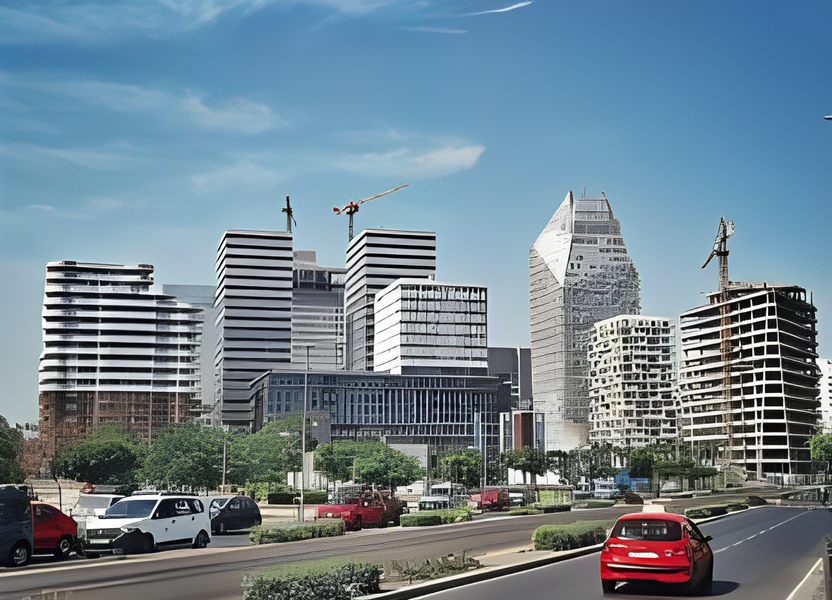
When planning a 12-day tour from Casablanca, choosing the right accommodation is important to ensure a comfortable and enjoyable trip. There are various types of accommodation options available in Morocco, ranging from budget-friendly hostels to luxury hotels.
One popular option for budget travelers is staying in a riad, which is a traditional Moroccan house with a central courtyard. Riads can be found in most cities and offer a unique and authentic experience. Some riads offer private rooms, while others have shared dormitories.
For those who prefer more luxurious accommodation, there are several high-end hotels in major cities like Marrakech, Fes, and Casablanca. These hotels offer amenities such as swimming pools, spas, and fine-dining restaurants.
Another option for accommodation is camping in the Sahara desert. Many tour companies offer overnight camping trips in the desert, where travelers can sleep in traditional Berber tents and enjoy a night under the stars.
It’s important to note that during peak tourist season, accommodation can fill up quickly, so it’s recommended to book in advance. Travelers should also research the location and amenities of their accommodation to ensure it meets their needs and preferences.
Overall, there are many accommodation options available for travelers planning a 12-day tour from Casablanca. Whether you prefer budget-friendly hostels or luxurious hotels, there is something for everyone.
Transportation Modes
When planning a 12-day tour from Casablanca, it is important to consider the different transportation modes available. Morocco has a well-developed transportation infrastructure, with several options to choose from, including:
Private Car
Hiring a private car with a driver is an excellent option for those who want a more personalized experience. It allows travelers to explore the country at their own pace and visit remote areas that are not easily accessible by public transportation. Private cars are also comfortable and convenient, and drivers are usually knowledgeable about the local area.
Train
Morocco has a reliable train network that connects major cities such as Casablanca, Rabat, Marrakech, and Fez. Trains are comfortable, affordable, and offer a scenic way to travel through the country. However, they can be crowded during peak travel times, and some destinations may not be easily accessible by train.
Bus
Buses are a popular mode of transportation in Morocco, with several companies operating services between major cities and towns. They are affordable and offer a good way to travel long distances. However, buses can be uncomfortable and crowded, and schedules may not always be reliable.
Taxi
Taxis are readily available in Morocco and are a good option for short trips within cities or towns. They are affordable and convenient, but it is important to negotiate the fare beforehand to avoid overcharging.
When planning a 12-day tour from Casablanca, travelers can choose a combination of these transportation modes to create an itinerary that suits their needs and budget. It is important to research and book transportation in advance to ensure a smooth and hassle-free journey.
Cultural Etiquette and Tips

Morocco is a country rich in culture and tradition, and it is important for visitors to respect and adhere to local customs. Here are some cultural etiquette and tips to keep in mind when planning a 12-day tour from Casablanca:
Dress Code
Morocco is a predominantly Muslim country, and visitors should dress modestly, especially when visiting religious sites. Women should cover their shoulders and wear long skirts or pants, while men should wear long pants and avoid shorts. It is also customary to remove shoes before entering a mosque.
Language
The official language of Morocco is Arabic, but many Moroccans also speak French and English. Visitors who speak some basic Arabic phrases will be appreciated, but most locals are happy to communicate in French or English.
Food and Drink
Moroccan cuisine is famous for its spices and flavors, and visitors should take advantage of the opportunity to try local dishes. It is customary to eat with the right hand and to use bread to scoop up food. Alcohol is available in some restaurants and hotels, but it is not widely consumed in Morocco.
Social Customs
Moroccans are known for their hospitality, and visitors should expect to be offered tea or coffee when visiting someone’s home. It is customary to accept the offer and to engage in polite conversation. Visitors should also avoid public displays of affection, as this is considered inappropriate in Moroccan culture.
Tipping
Tipping is common in Morocco, and visitors should tip hotel staff, drivers, and guides. A good rule of thumb is to tip 10% of the total bill for restaurant service. It is also customary to tip for services such as haircuts and massages.
By following these cultural etiquette and tips, visitors can ensure a respectful and enjoyable experience when planning a 12-day tour from Casablanca.
Local Cuisine and Dining
Moroccan cuisine is renowned worldwide for its unique blend of flavors and spices. It is a perfect mix of Mediterranean, African, and Middle Eastern influences. Food enthusiasts will find a wide variety of dishes to try during their 12-day tour from Casablanca.
Some of the must-try dishes include tagine, a slow-cooked stew made with meat or fish and vegetables, and couscous, a dish made with steamed semolina grains and served with vegetables and meat. Another must-try dish is harira, a hearty soup made with lentils, chickpeas, and tomatoes, often served during Ramadan.
Visitors can also indulge in Moroccan street food, such as bissara, a delicious soup made with fava beans, and msemen, a type of flatbread that is often served with honey and butter. For those with a sweet tooth, Moroccan pastries, such as baklava and chebakia, are a must-try.
Moroccan cuisine is also known for its mint tea, which is a staple in the country. It is often served after meals and is a symbol of hospitality. Visitors can enjoy mint tea at local cafes or while visiting the markets.
Morocco has a vibrant food scene, with many restaurants serving traditional Moroccan cuisine. Visitors can also find international cuisine in the larger cities. It is recommended to try local restaurants to experience the authentic taste of Moroccan cuisine.
Safety and Health Considerations
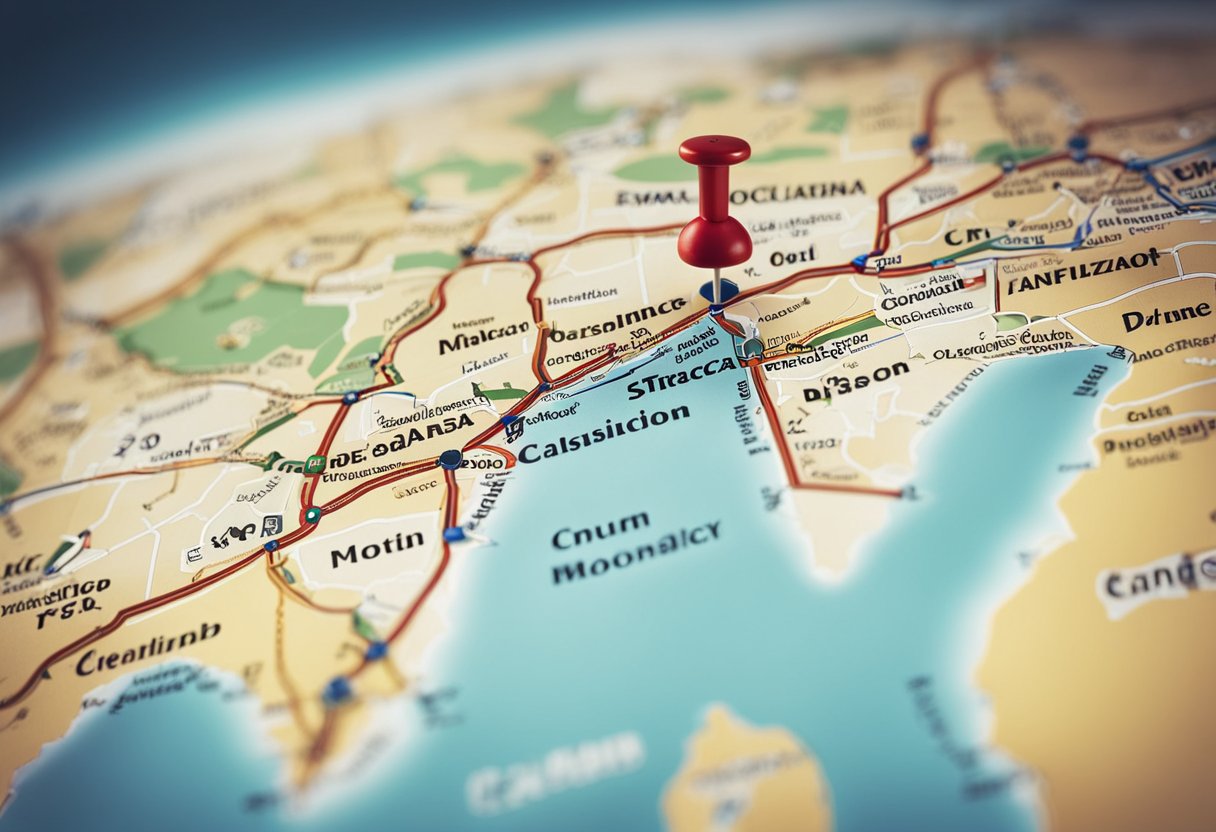
When planning a 12-day tour from Casablanca, it is important to consider safety and health issues to ensure a comfortable and enjoyable trip. Morocco is generally a safe country for tourists, but it is still advisable to take some precautions to avoid any unpleasant incidents.
Safety Considerations
- Petty theft: Tourists are often targeted by pickpockets and thieves in crowded areas such as markets, train stations, and tourist attractions. Travelers should be cautious of their surroundings and keep an eye on their belongings at all times. It is recommended to use a money belt or a cross-body bag to keep valuables safe.
- Scams: Tourists should be aware of scams that are common in Morocco, such as fake tour guides, overpriced taxis, and fake products. It is recommended to book tours and transportation through reputable companies and to negotiate prices before getting into a taxi.
- Traffic: Traffic in Morocco can be chaotic, and pedestrians should be careful when crossing the street. It is recommended to use pedestrian crossings and to be aware of cars and motorcycles on the road.
Health Considerations
- Food and water: Travelers should be cautious of what they eat and drink to avoid getting sick. It is recommended to drink bottled water and to avoid tap water, ice cubes, and raw or undercooked food.
- Sun exposure: Morocco is a sunny country, and travelers should protect themselves from the sun to avoid sunburn and heatstroke. It is recommended to wear sunscreen, a hat, and sunglasses, and to stay hydrated.
- Medical care: Travelers should be aware that medical care in Morocco may not be up to the standards of Western countries. It is recommended to bring a basic first aid kit and any necessary medication, and to have travel insurance that covers medical emergencies.
By taking these safety and health considerations into account, travelers can enjoy a safe and comfortable 12-day tour from Casablanca.
Budgeting Your Tour
Planning a 12-day tour from Casablanca requires a well-thought-out budget to ensure that you get the most out of your trip without overspending. Here are some tips to help you budget for your tour:
Accommodation
Accommodation is one of the most significant expenses when traveling, so it’s essential to budget accordingly. The average cost of a hotel in Casablanca is around $80 per night. However, there are cheaper options available, such as hostels, which can cost as little as $10 per night. It’s always a good idea to book your accommodation in advance to get the best deals.
Transportation
Transportation costs can add up quickly, especially if you plan to travel long distances. A private driver can cost around $100 per day, while public transportation is much cheaper, with bus and train tickets costing around $5 to $10 per trip. If you plan to travel to remote areas, it’s best to hire a driver for convenience and safety.
Food
Moroccan cuisine is delicious and affordable, with street food and local restaurants offering a range of options for budget travelers. On average, a meal in a local restaurant can cost between $5 and $15. It’s also a good idea to try the local street food, which is not only delicious but also cheap.
Activities
Morocco is a country full of history and culture, with plenty of activities to keep you busy during your 12-day tour. The cost of activities can vary, with some being free, such as exploring the medinas, while others can cost up to $50, such as a camel ride in the Sahara desert.
By following these budgeting tips, you can plan a 12-day tour from Casablanca without breaking the bank. It’s essential to plan ahead, research your options, and book in advance to get the best deals.
Packing Essentials
When planning a 12-day tour from Casablanca, packing essentials is vital for a comfortable and enjoyable trip. Here are some items to consider bringing:
Clothing
Morocco is a conservative country, and visitors should dress accordingly. Clothing should be modest and cover shoulders and knees, especially when visiting mosques and other religious sites. Loose-fitting, lightweight clothing is recommended, especially during the summer months. A hat and sunglasses are also essential to protect from the sun.
Footwear
Comfortable walking shoes are a must, as many of the streets and alleys in Morocco are uneven and cobbled. Sandals are also acceptable, but make sure they are sturdy and provide enough support.
Toiletries
It is always a good idea to bring a small first aid kit that includes band-aids, antiseptic, and any medication that may be needed. Sunscreen, insect repellent, and hand sanitizer are also recommended.
Technology
A camera is a must for capturing the stunning scenery and architecture in Morocco. Make sure to bring extra batteries and memory cards. A portable charger is also recommended, as power outlets may not always be available.
Miscellaneous
A daypack is essential for carrying water, snacks, and other essentials during day trips. A money belt or pouch is also recommended for keeping valuables safe. Finally, a travel adapter is necessary for charging electronic devices.
By packing these essentials, travelers can enjoy a comfortable and safe 12-day tour from Casablanca.
Communication and Connectivity
When planning a 12-day tour of Morocco from Casablanca, it is essential to consider communication and connectivity options. Morocco is a country with a diverse culture and language, and it is vital to stay connected with your loved ones and tour guide.
Mobile Networks
Morocco has a well-developed mobile network infrastructure, and visitors can purchase a local SIM card at the airport or any mobile network provider’s shop. The three main mobile network providers in Morocco are Maroc Telecom, Orange, and Inwi. The cost of a SIM card is around MAD 30-50 ($3-5), and data packages start from MAD 10 ($1) for 1 GB of data valid for one day.
Wi-Fi Connectivity
Most hotels, cafes, and restaurants in Morocco offer free Wi-Fi connectivity. However, the quality of the connection may vary depending on the location and time of day. Visitors can also find Wi-Fi hotspots in public places such as airports and train stations.
Language Barrier
Morocco has two official languages, Arabic and Berber, and French is widely spoken in tourist areas. English is also spoken by many Moroccans, especially those in the tourism industry. However, visitors may encounter language barriers in remote areas or when communicating with locals. It is advisable to learn some basic Arabic or French phrases before the trip or carry a phrasebook.
Tips for Staying Connected
To stay connected while on a 12-day tour of Morocco, visitors should consider the following tips:
- Purchase a local SIM card for mobile data and calls
- Use free Wi-Fi hotspots in hotels, cafes, and restaurants
- Download offline maps and translation apps before the trip
- Learn some basic Arabic or French phrases
- Carry a portable charger to keep your devices charged on the go.
By following these tips, visitors can stay connected and enjoy a hassle-free 12-day tour of Morocco from Casablanca.
Souvenirs and Shopping
Morocco is famous for its markets, and Casablanca is no exception. Visitors can find a variety of souvenirs to take home with them, including traditional Moroccan clothing, pottery, leather goods, and spices. The most famous market in Casablanca is the Central Market, which is also known as the New Medina. Here, visitors can find everything from fresh produce to handmade crafts.
One of the most popular souvenirs to bring back from Morocco is argan oil. This oil is made from the nuts of the argan tree, which is native to Morocco. Argan oil is used for a variety of purposes, including cooking, skincare, and haircare. Visitors can find argan oil in many of the markets in Casablanca, but it’s important to make sure that the oil is pure and of high quality.
Another popular souvenir to bring back from Morocco is a traditional Moroccan rug. These rugs are handmade by local artisans and come in a variety of colors and patterns. Visitors can find rugs in many of the markets in Casablanca, but it’s important to be aware that some vendors may try to sell fake or low-quality rugs. It’s best to do some research beforehand and purchase a rug from a reputable vendor.
Visitors can also find a variety of spices in the markets of Casablanca. Moroccan cuisine is known for its use of spices, and visitors can bring home a taste of Morocco by purchasing some of these spices. Popular spices include cumin, paprika, and saffron. Visitors can also find pre-made spice blends that are used in traditional Moroccan dishes.
Overall, shopping in Casablanca can be a fun and exciting experience. Visitors should be prepared to bargain with vendors and should be aware of the quality of the products they are purchasing. With a little bit of research and a sense of adventure, visitors can find some truly unique souvenirs to bring back home with them.
Frequently Asked Questions
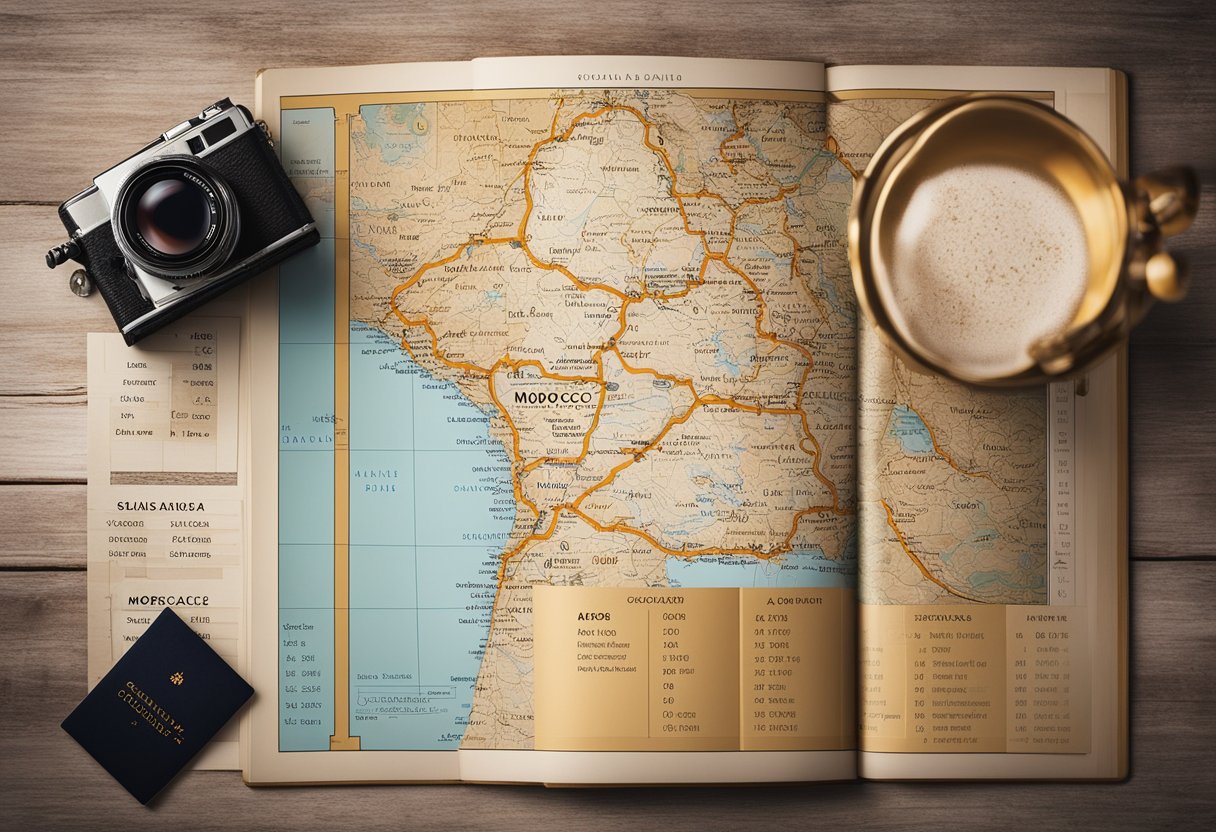
What are the must-visit cities in a 12-day Moroccan tour starting from Casablanca?
A 12-day tour is a perfect amount of time to explore the major highlights of Morocco. The must-visit cities include Marrakech, Fes, Chefchaouen, Rabat, and Casablanca. Each city has its own unique charm and cultural significance, offering a diverse range of experiences for travelers.
How can one balance cultural experiences and relaxation in a 12-day itinerary in Morocco?
Morocco is a country rich in culture and history, and there is no shortage of cultural experiences to be had. However, travelers can also balance their itinerary with some relaxation time by visiting one of the many hammams or taking a leisurely stroll through one of the many gardens.
What is the recommended amount of time to spend in each major city during a 12-day Moroccan tour?
The recommended amount of time to spend in each major city during a 12-day Moroccan tour is 2-3 days. This gives travelers enough time to explore the city’s main attractions and get a sense of its culture and history.
How should one prepare for weather variations in a 12-day winter itinerary in Morocco?
Winter in Morocco can be quite chilly, especially in the evenings. Travelers should pack warm clothing and layers to prepare for the colder temperatures. It is also important to bring a waterproof jacket or umbrella, as winter in Morocco can be rainy.
Can you suggest a mix of popular and off-the-beaten-path attractions for a 12-day Moroccan adventure?
For a mix of popular and off-the-beaten-path attractions in Morocco, travelers can visit the Majorelle Garden in Marrakech, take a cooking class in Fes, hike the Rif Mountains near Chefchaouen, explore the Kasbah of the Udayas in Rabat, and visit the Hassan II Mosque in Casablanca.
What are some tips for backpacking across Morocco over a span of 12 days?
Backpacking across Morocco can be a rewarding experience, but it is important to be prepared. Travelers should pack light, bring a reliable backpack, and be sure to have plenty of water and snacks on hand. It is also important to be aware of cultural norms and dress appropriately.




